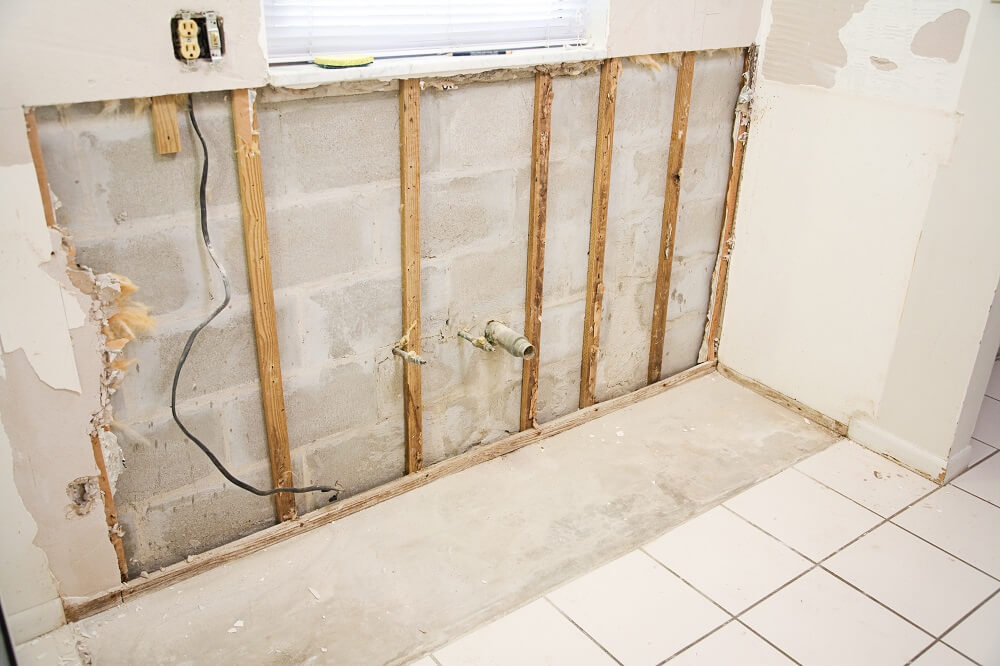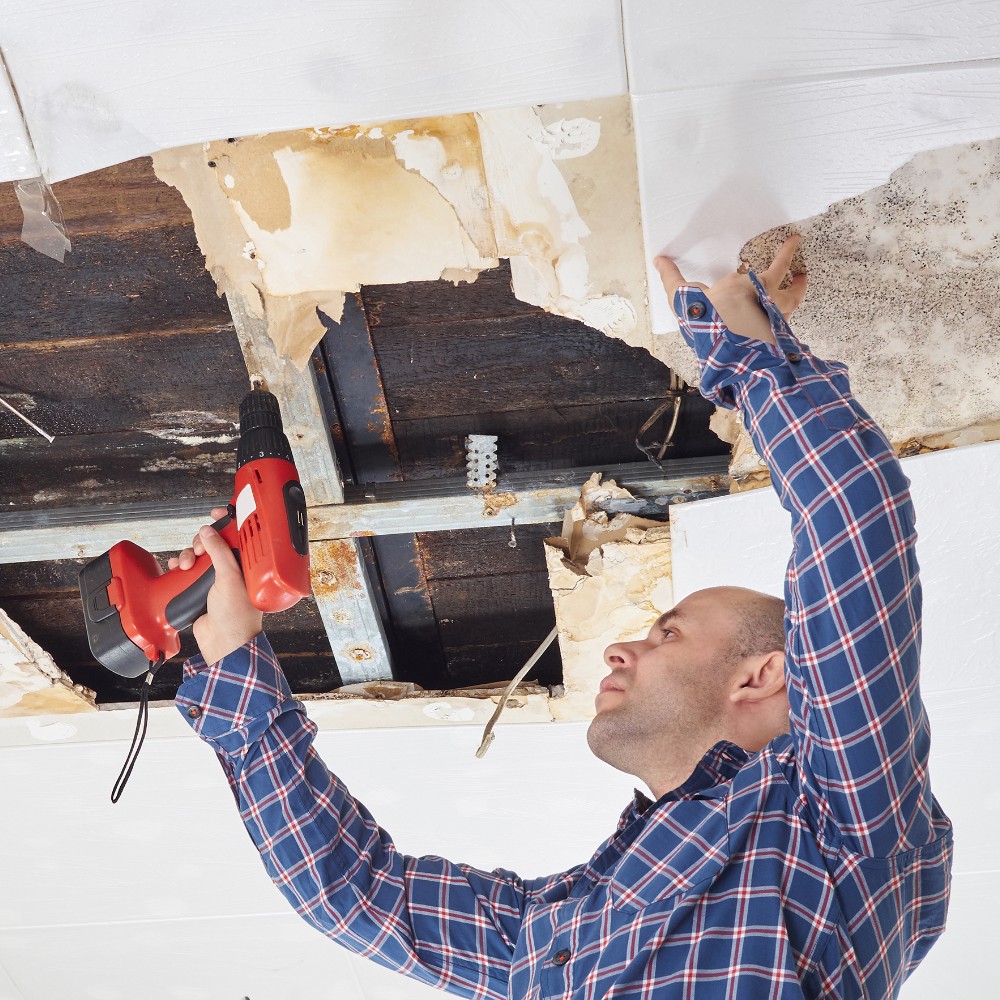Leading Water Mitigation Company Offering Fast and Efficient Solutions
Leading Water Mitigation Company Offering Fast and Efficient Solutions
Blog Article
The Refine of Water Damage Cleaning: Ensuring Your Home Is Brought Back Successfully
Water damage can be a daunting difficulty for home owners, requiring a structured and careful cleanup procedure to bring back safety and security and performance. Originally, a detailed evaluation is critical to determine the level of the damage and figure out the suitable removal measures. Following this, reliable water removal techniques play an essential duty in reducing more damage. Nonetheless, the nuances of drying, sterilizing, and ultimate repair are just as essential and typically forgotten. Recognizing these phases can make a substantial difference in the result of your home's repair, triggering a closer check out what each action entails.
Analyzing the Damages
Upon uncovering water damage, the primary step is to thoroughly analyze the level of the effect. This initial examination is vital, as it assists identify the necessary steps for effective cleaning and repair. Begin by examining the affected areas, consisting of wall surfaces, ceilings, floors, and individual items, to recognize the source of the water intrusion, whether from flooding, leakages, or condensation.
Documenting the damages is necessary for both insurance policy claims and planning repair efforts - damage restoration services. Usage photos and written notes to record the seriousness of the damages, keeping in mind any damaged structural components and materials. Pay special focus to areas that may not be instantly noticeable, such as behind walls and under carpetings, as hidden wetness can result in additional difficulties, including mold and mildew growth
Additionally, analyze the timeline of the water direct exposure. The longer the materials stay wet, the greater the potential for damages. Recognizing the duration of exposure will certainly inform the urgency of removal efforts. Eventually, a comprehensive evaluation prepares for a successful water damages cleanup process, ensuring that all impacted locations are dealt with properly and thoroughly.
Water Removal Techniques

Experts usually employ completely submersible pumps for larger quantities of water, which can promptly alleviate flooding in basements or various other affected areas. For smaller sized quantities, wet/dry vacuums are usually made use of to draw out residual wetness from rugs and difficult surfaces. Additionally, using mobile extractors enables targeted elimination in restricted areas or areas with fragile products.
In circumstances of polluted water, such as sewage or floodwater, advanced removal strategies might involve making use of biohazard equipment to ensure safety and compliance with wellness guidelines. High-powered extraction tools are crucial in minimizing water retention in architectural materials, which can result in mold and mildew development and structural degeneration if not addressed promptly.
Eventually, the efficiency of water extraction strategies plays a critical role in the general success of the water damage cleanup procedure, preparing for succeeding remediation initiatives.
Drying and Dehumidification
When standing water has been successfully extracted, the following crucial phase in the water damages cleaning process is drying out and dehumidification. This step is vital to protect against additional damages and mold development, which can occur within 24 to 2 days in wet settings.
To accomplish efficient drying, specialized devices such as industrial-grade air moving companies and dehumidifiers is used. Air movers circulate air across damp surface areas, enhancing evaporation prices, while dehumidifiers decrease humidity degrees in the air, promoting a helpful environment for drying out. The combination of these tools ensures that wetness is attracted out from furnishings, walls, and floors, allowing them to dry extensively.
It is very important to check the drying out process closely. Professionals frequently utilize dampness meters to analyze the moisture material in various materials, making sure that all influenced locations get to acceptable dryness levels. This precise technique aids to stop covert wetness pockets that might bring about architectural damage or undesirable mold growth.

Cleaning and Sanitizing
After the drying and dehumidification phase is complete, the following crucial action orange county water damage in water damage cleaning is cleansing and sterilizing the impacted areas. This procedure is important to avoid the development of mold, bacteria, and various other microorganisms that prosper in moist atmospheres.
The cleaning stage normally involves getting rid of any type of debris, dust, and pollutants from surfaces making use of specialized cleansing agents. For hard surface areas, a combination of soap and water or business cleaning items is commonly used. Soft materials, such as furniture and rugs, may need much more comprehensive cleansing approaches, including vapor cleaning or deep removal methods, to make sure complete sanitation.

Disinfecting follows cleaning, utilizing EPA-approved anti-bacterials to eliminate dangerous microorganisms. This step is crucial, specifically in areas that might have entered into call with floodwaters or sewage, as these resources can present significant wellness dangers.
Additionally, it is very important to address any type of continuing to be odors, which might require making use of smell neutralizers or advanced methods like ozone therapy. Correct cleaning and disinfecting not just restore the security and health of your home yet also prepared official site for effective restoration and repair work in subsequent stages of the water damages clean-up procedure.
Restoration and Repair Work

Once the analysis is complete, reconstruction initiatives can begin. This usually involves fixing or changing damaged materials, ensuring that all job adheres to neighborhood structure codes and requirements. As an example, if drywall has actually been jeopardized, it will need to be removed and changed with new product. Furthermore, floor covering may need similar interest, depending on the level of water exposure.
It is vital to engage seasoned repair experts throughout this process, as they have the know-how to deal with intricate fixings efficiently. In addition, they can assist minimize potential future problems, such as mold development or architectural instability, thus making certain a risk-free and habitable living environment. Eventually, reliable repair and fixings restore the home's integrity and improve its total value.
Verdict
To conclude, the process of water damages cleaning is critical for bring back a home to its pre-damage problem. Each phase, from evaluating the damage to carrying out reference reliable water removal methods, adhered to by thorough drying, sterilizing, and needed repair work, plays an essential role in guaranteeing security and compliance with building requirements. Effective execution of these steps not only mitigates immediate damages but also enhances the long-term integrity and value of the building.
Water damages can be an overwhelming difficulty for property owners, necessitating a careful and structured clean-up procedure to bring back safety and functionality. Inevitably, an extensive assessment lays the foundation for a successful water damage cleaning procedure, making sure that all affected locations are addressed properly and completely.
Effective water removal techniques are crucial in alleviating damages and stopping additional difficulties complying with a water breach event.In verdict, the process of water damage cleanup is important for restoring a home to its pre-damage condition. Each stage, from assessing the damages to executing reliable water extraction methods, adhered to by comprehensive drying out, sanitizing, and needed repairs, plays a crucial role in guaranteeing safety and security and compliance with building criteria.
Report this page